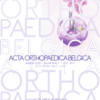Differential diagnosis of acute traumatic hip pain in the elderly
Hip pain ; hip fracture ; pelvic trauma ; MRI ; occult hip fracture
Published online: Jun 15 2021
Abstract
Elderly patients who present with an inability to weight bear following a fall, with normal radiographs, should be appropriately investigated to rule out an occult hip fracture (OHF). We aim to identify both the range and incidence of the differential diagnosis of acute traumatic hip pain in a large series of patients investigated for OHF.
A retrospective analysis of consecutive patients investigated for an OHF with magnetic resonance imaging (MRI) was performed. Dedicated musculo- skeletal radiologists reported the MRI scans. All diagnoses including hip fractures, other fractures and soft tissue injuries were recorded. Case notes were reviewed for all patients to identify subsequent complications, management and outcomes.
A total of 157 patients fulfilled the inclusion criteria. 52 (33%) patients had a fracture of the proximal femur. The majority of patients with proximal femoral fractures required surgical intervention. 9 patients who had fractures of the greater trochanter of the femur without fracture extension across the femoral neck were managed non-operatively.
40 (25%) patients had fractures of the pelvis, with a combined pubic rami and sacral fracture occurring frequently. The most common diagnosis was a soft tissue injury alone that was seen in 60 (38%) patients imaged. Injuries to the gluteal muscle group, iliopsaos complex and trochanteric bursa were most prevalent. All patients with soft tissue injuries or fractures of the pelvis were successfully managed non-operatively.
This study highlights a wide range of differential diagnoses in elderly patients presenting with acute traumatic hip pain. The proximal femur was frac- tured in 33% of patients imaged for OHFs in our series. The most common diagnosis was a soft tissue injury around the hip and pelvis ; these injuries can be successfully managed without surgery.
